Tamerlane II
This two-player Chess Variant is inspired by Timur's or Tamerlane's Chess. It is intended to replace and improve the earlier version of Tamerlane II, which competed in the Large Chess Variant Contest in 1999, with a modest result. Tamerlane II has been invented in 1978 by Jean-Louis Cazaux, as his first chess variant creation ever, already with Ships replacing Tamerlane's Giraffes, and 11 columns. It has known several major revisions until the last one in 2000, which has frozen the rules presented below.
The fact that strong pieces can only appear after promotion gives an original taste to this large Chess Variant. However, for those looking for strategies around "bloody" battles, it could be interesting to try a simple variant where Princes and Ship are replaced by Queens and Eagles from the initial set-up: Wild Tamerlane Chess.
Setup
The board has 11x11 checkered squares, with light colored squares at each corner. The 11 files respect the original configuration of Tamerlane's chess with a central king. The 11 ranks give more space to the game allowing to arrange the piece before struggling. Moreover, they place Bishops and Camels on same colors allowing attack of opposite counterparts and mutual protection.
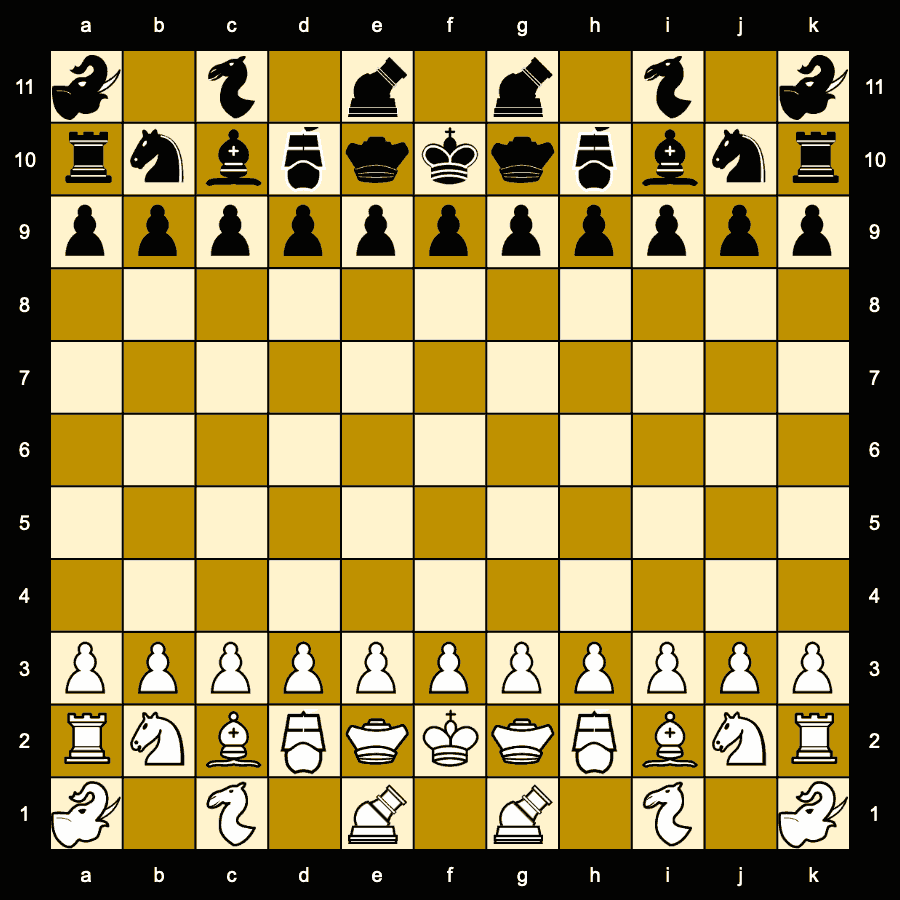
There are 28 pieces per side:
White: Elephant a1, k1; Camel c1, i1; Cannon e1, g1; Rook a2, k2; Knight b2, j2; Bishop c2, i2; Ship d2, h2; Prince e2, g2; King f2; Pawn a3 to k3.
Black: Elephant a11, k11; Camel c11, i11; Cannon e11, g11; Rook a10, k10; Knight b10, j10; Bishop c10, i10; Ship d10, h10; Prince e10, g10; King f10; Pawn a9 to k9.
Pieces
King: identical to FIDE chess, except that there is no castling at Tamerlane II. The King moves 1 step in all directions on a not attacked square. The King is in check if it is attacked by one or several enemy pieces. It is forbidden to play a move letting his King in check.
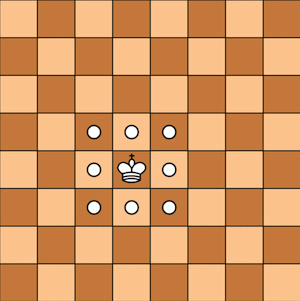
Prince: a non-royal King who moves and captures one square in any direction, but without being hindered by check. It has been inspired by medieval games like the "Man". For its first move, like the Pawn, it may go without capturing to the second square forward if the intervening square is unoccupied.

Ship: moves one square diagonally and then, goes away of an indefinite number of cases vertically, never horizontally. It can move one square diagonally only. It can not jump and must begin its move with the diagonal step. The Ship is more limited than the Eagle (which can move horizontally, see below). Nevertheless its move power is between the Rook and the Bishop.
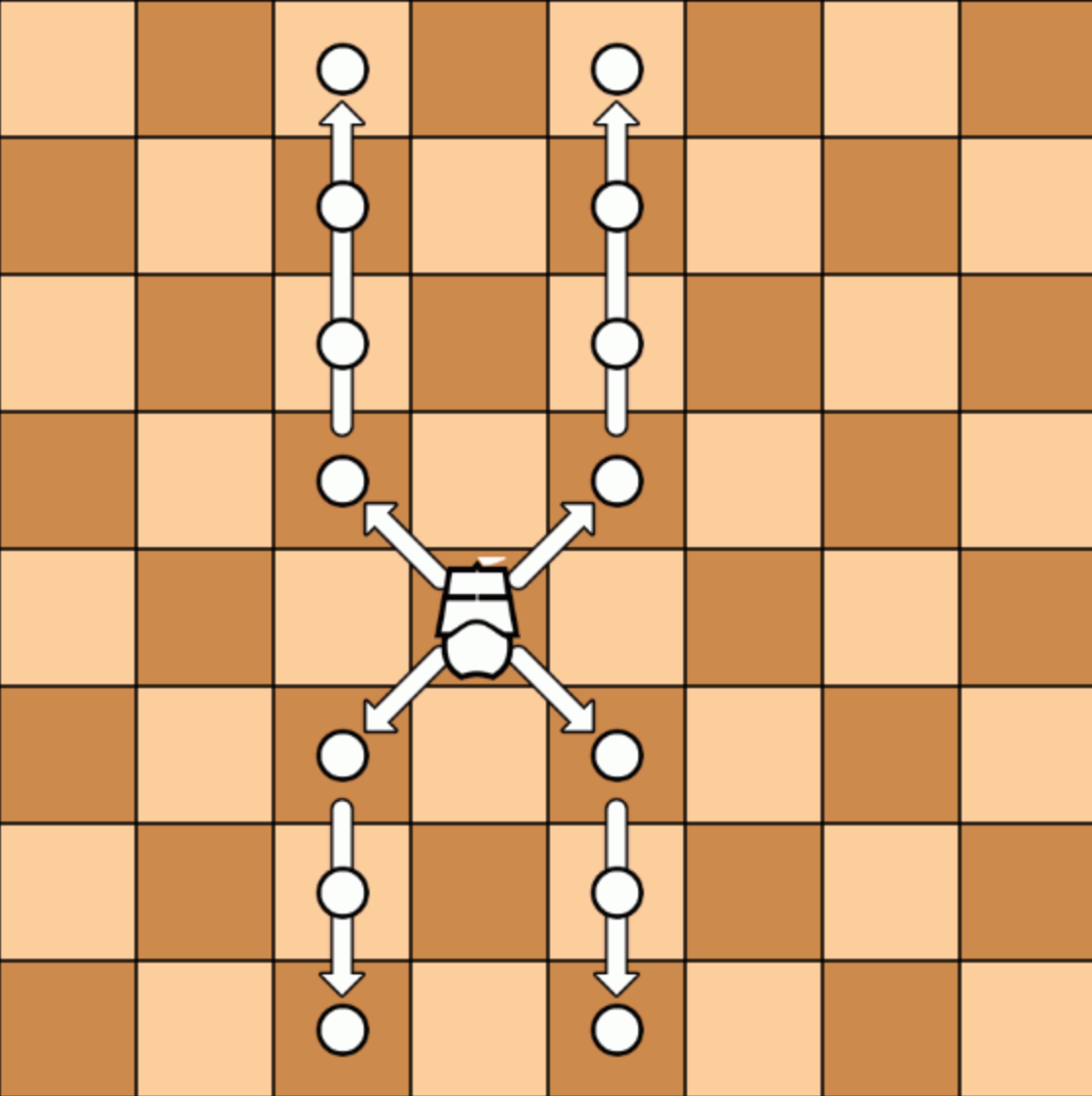
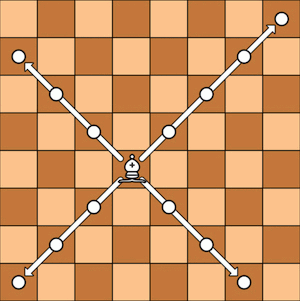
Knight: a (2,1) jumper, it jumps to the opposite square of a 2x3 rectangle. No matter what the intermediate square contains. Identical to standard chess

Rook: moves to any square along the file or the rank on which it stands. Identical to standard chess
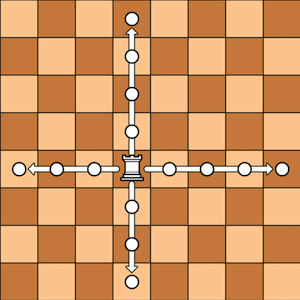
Cannon: exactly as in Xiangqi. The Cannon moves without taking like a Rook, but it takes by going in a straight horizontal and vertical line and jumping over exactly one piece. When a Cannon takes a piece, there must be exactly one piece between the original and final square of the Cannon's move - this piece may be of either color. This is identical to the move of the Cannon in Shako and Metamachy.
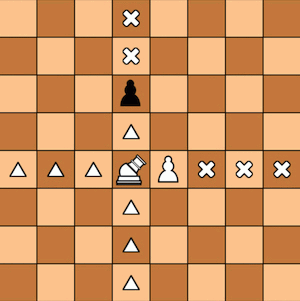
Camel: a (3,1) jumper, it jumps to the opposite square of a 2x4 rectangle, like an extended Knight. No matter what intermediate squares contain. Note that it always stays on the same color of square. A well known piece from medieval Muslim great Chess like Tamerlane's Chess. Identical to Metamachy

Elephant: it moves one or two squares diagonally. When an Elephant moves two squares, no matter what intermediate squares contain. Note that it always stays on the same color of square. The Elephant moves as the combined Alfil and Ferz from Shatranj, two pieces which were also present in mediaeval Chess and have disappeared with the birth of modern moves for the Bishop and the Queen. Exactly as in Shako and Metamachy.

Pawn: it can move straight forward one, or two square from its starting position on the board, without capturing. It captures one square diagonally forward. Identical to standard chess.

There is no Queen and no Eagle on the starting setup. These pieces may appear later in the game by promotion of the Pawn or Prince for the Queen, and of the Ship for the Eagle.
Queen: slides to any square along the file, the rank or a diagonal on which it stands. Identical to standard chess.
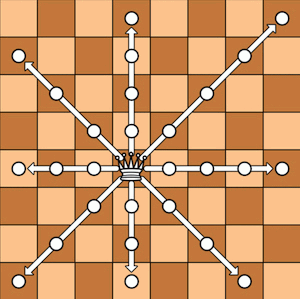
Eagle: moves one square diagonally and then, slides away of an indefinite number of squares vertically or horizontally. It is authorized to go only one square diagonal. It can not jump and the unobstructed path must start with the diagonal movement. This piece is almost as powerful as the Queen and is inspired by the Giraffe from Tamerlane's Chess and the Aanca (a mythical giant bird preying elephants, mistaken for a gryphon) from Alfonso X's Grande Acedrex. Identical to Metamachy.
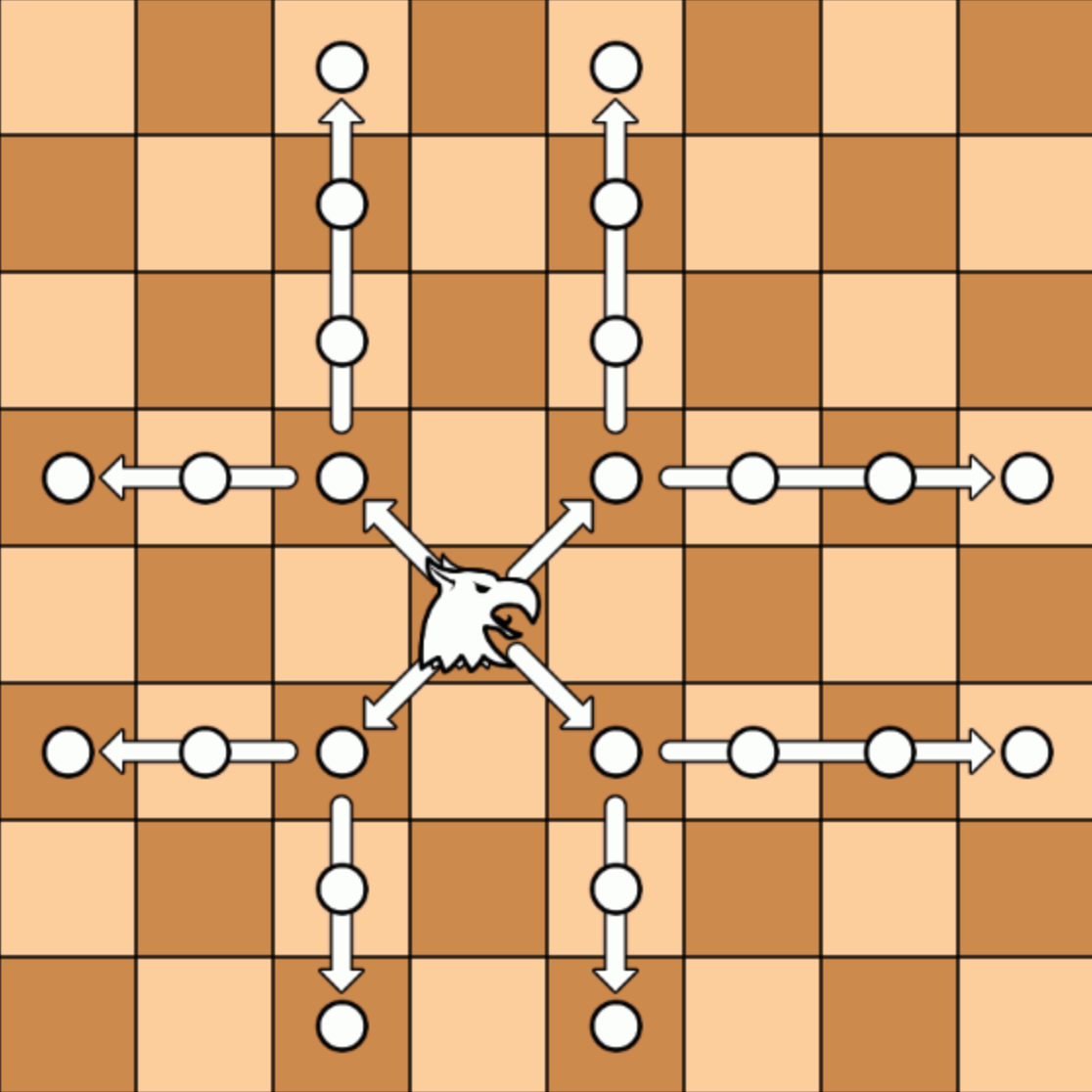
Rules
White plays first.
The King's succession: A checkmated King does not mean the end of the game if the King's owner still has one Prince that is not itself threatened. In such a case, the checkmated King and this Prince swap their positions. This counts as one move for the checkmated player. The checking player is free to capture or not the new Prince (knowing that this Prince may replace the enemy King later if it is not seized now). If the player with the checkmated King still has two Princes, both not under threat, which Prince becomes King is a matter of choice. This process may be repeated as long as the above conditions are fulfilled. It is therefore necessary to eliminate all pretenders to the throne in order to win. Victory is obtained when the opposing King is checkmated with no possibility to be replaced.
It must be noted that, even though a King may be succeeded by a crownable Prince, the King may not remain in check or be put in check.
End-of-game rules: Stalemate, and other rules of a draw are similar to those in chess.
Castling: There is no castling in Tamerlane II.
En passant capture: Any time a Pawn or Prince takes a double step and passes through a square controlled by an opposing Pawn, that Pawn may capture the Pawn or Prince as if it has only moved one square. This en passant capture must be made on the move immediately following the double step. Only a Pawn may capture en passant; the Prince does not have this option.
Pawn promotion: When a Pawn reaches the last row on the opposite side of the board, it is promoted to a Queen of the same color and nothing else. This promotion cannot be refused.
Prince promotion: A Prince may also be promoted when reaching the last row on the opposite side of the board. The Prince is promoted to a Queen of the same color. This promotion is optional. If the promotion is refused, it may be accepted later, if the Prince moves on the last row again.
Ship Promotion: When a Ship reaches one of the two opposite corners (a11 or k11 for White, a1 or k1 for Black), it is promoted to an Eagle of the same color. This promotion cannot be refused.
Differences between old Tamerlane II and Tamerlane II
Here is the list of the changes made in this attempt to improve the game:
- Pawn can promote to Queen on last row. This gives more power to the Pawn. The rule of promoting to any captured piece is unfair since it is a penalty for the strong player who still has many pieces on the board. Promotion to Queen only is an appreciated simplification in this game where there are a lot of different piece types.
- Princes replace Fers and Wazir. It is a good simplification with 1 piece instead of 2 different. Also, the Prince is much more interesting than the Fers and the Wazir which are very limited and weak pieces.
- Princes promote to Queen on last row.
- Ships can promote to Gryphon on opposite board corners. This gives an interesting possibility with these pieces which are very powerful longitudinally but are rather slow to move laterally. Once promoted, the Gryphon is a dreadful piece which can terminate the game very quickly.
- Castling is suppressed. It was very rare anyway since there are 4 pieces to remove between the King and the Rook.
- Non-capturing shift of Bishop, Camel and Elephant is suppressed. It was an unnecessary complication which made the game very unusual and difficult to master. Now, the player has just to remember that dark squares are controlled by the Bishops and light squares by the Camels and the Elephants.
Notes
Deep thanks to H.G. Muller for making the Interactive Diagram below
|
satellite=tamer
graphicsDir=/graphics.dir/alfaeriePNG/
files=11
ranks=11
promoZone=1
maxPromote=1
promoChoice=QF
whitePrefix=w
blackPrefix=b
graphicsType=png
lightShade=#FFE2CC
darkShade=#BF9000
rimColor=#000000
coordColor=#FFFFFF
squareSize=50
symmetry=mirror
firstRank=1
useMarkers=1
succession=1
prince:F:KifmnD:duke:e2,g2
pawn::fmWfceFifmnD::a3-k3
camel:M:::c1,i1
cannon::::e1,g1
elephant::FA:elephantferz:a1,k1
knight:N:::b2,j2
bishop::::c2,i2
rook::::a2,k2
ship::[F?fqR]::d2,h2
eagle::[F?fsR]:gryphon:
queen::::
king::KduU::f2
|
|

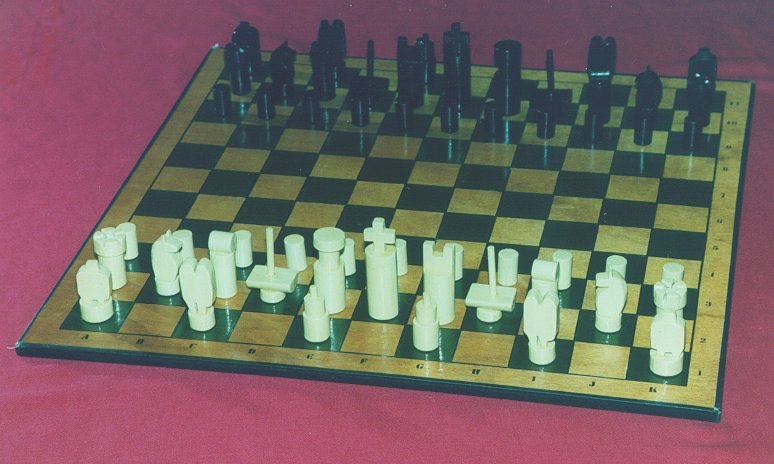
Photo made by Jean-Luc Muraro of an homemade board and set of Tamerlane II, designed and made by the author.
Remarks
You can play either Tamerlane 2000 or Wild Tamerlane with the following zrf file designed by Jean-Louis Cazaux. (providing you own Zillions-of-games software.). However, the Prince crowning is not implemented for programming reasons.
The diagrams on this page are made with the help of the Musketeer's chess painting tool, thanks to Zied Haddad and Jérôme Choain.
WWW page created June 05, 2000. Modified on March 18, 2001, thanks to Ivan A Derzanski for corrections. Edited on December 31, 2023. In memoriam of my best friend Jean-Luc Muraro (1967-2020) gone too soon.
 This 'user submitted' page is a collaboration between the posting user and the Chess Variant Pages. Registered contributors to the Chess Variant Pages have the ability to post their own works, subject to review and editing by the Chess Variant Pages Editorial Staff.
This 'user submitted' page is a collaboration between the posting user and the Chess Variant Pages. Registered contributors to the Chess Variant Pages have the ability to post their own works, subject to review and editing by the Chess Variant Pages Editorial Staff.
By Jean-Louis Cazaux.
Last revised by Jean-Louis Cazaux.
Web page created: 2000-06-05. Web page last updated: 2022-12-27
